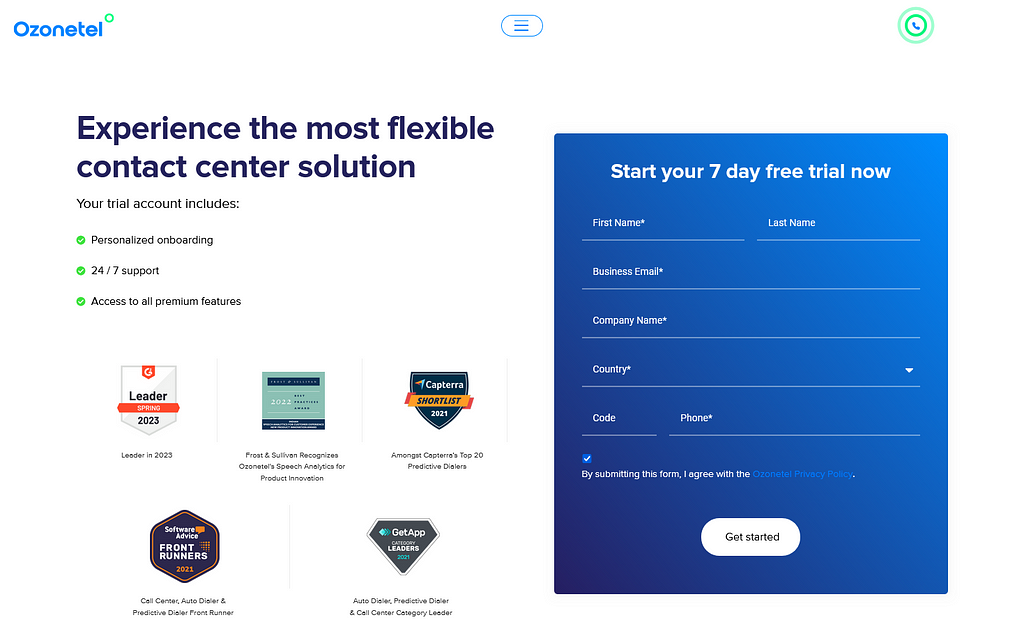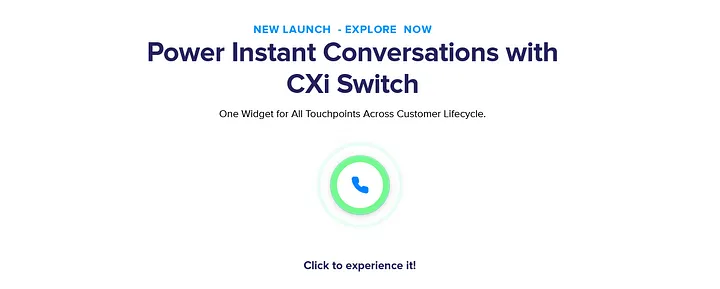- Resources
- What Is the Difference Between Inbound and Outbound
What Is the Difference Between Inbound and Outbound

Typically, a place that maps more incoming calls is called an inbound call center. On the other hand, centers that make more outgoing calls are called outbound call centers. The tipping point, for the sake of clarity, is 50%.
So, if a contact center makes more than 50% of outgoing calls than incoming calls, it will be called an outbound call center. And conversely, if more than 50% of calls are inbound, it will be called an inbound call center.
Outbound calls are outgoing calls made by agents (or sales representatives) for sales, follow-ups, renewal reminders, or updates. Inbound calls are incoming calls taken by agents for customer support or inquiries.
To understand the nature of work, purpose, agents, attributes, customers, level of challenge, and effect on business, let’s delve deeper into this.
Inbound & Outbound Call Centers: Tailoring Operations to Your Business Needs
For businesses planning to set up a call center, a comprehensive assessment of their specific needs is crucial. It’s essential to understand the differences between inbound and outbound call centers. Inbound centers handle customer inquiries and support, while outbound centers proactively reach out to potential customers for sales and engagement. Let’s take a look at their key features in detail.
What are Inbound Call Centers?
Inbound call centers answer calls from customers seeking help or information. It’s about customers starting the conversation, and the goal is to solve their issues. Inbound centers are the go-to for customers needing help, aiming for quick solutions and happy customers.
Key Features of Inbound Call Centers:
Customer-Initiated Calls
Inbound call centers primarily deal with calls initiated by customers. These calls can be related to various queries, issues, or requests for information.
Help-focused
The main objective of inbound call centers is to assist customers and resolve their issues, be it answering product-related questions, providing technical support, handling payments and renewals, or addressing complaints. The focus is on helping the customer and providing quick resolutions.
Tools Used
Inbound call centers use a variety of tools to manage and streamline their operations. These tools include:
Automatic Call Distribution (ACD): Distributes incoming calls to available agents efficiently.
Interactive Voice Response (IVR): Guides callers through automated menus to direct them to the right department or information.
Call Monitoring: Supervisors can listen in on calls for quality control and training purposes.
Call Control: Enables agents to manage calls effectively, including features like hold, transfer, and mute.
Customer Relationship Management (CRM): Stores and manages customer information to provide personalized service.
Ticketing Systems: Tracks and manages customer issues and requests systematically
Success Measured by:
The performance of an inbound call center is often measured by how quickly and effectively customer issues are resolved.
Key metrics include:
- First Call Resolution (FCR): The ability of a call center to solve the issue in the first interaction.
- Average Handling Time (AHT): The average duration of a customer call, including hold time.
- Average Time in Queue (ATQ): Time taken by businesses to connect customers with an agent.
- Customer Satisfaction (CSAT): Feedback from customers on their satisfaction with the service.
- Average Abandonment Rate (AAR): Callers abandoning calls in queue before agent connection.
What are Outbound Call Centres?
Outbound call centers take the initiative by making the first move in customer interactions. Outbound call centers typically handle sales, promotions, surveys, and customer service tasks, including confirmations and transactional updates.
Here are the key features that define the operations of outbound call centers:
Agent-Initiated Calls
Unlike inbound call centers, where customers initiate calls, outbound call centers involve agents reaching out to customers. These calls are made for various purposes, including sales, telemarketing, surveys, promotions, or updates.
Sales Focus
The primary objective of outbound call centers is often sales-driven. Agents are tasked with promoting products, services, or offerings, and their interactions are geared towards influencing customers to make a purchase.
Tools Used
Outbound call centers employ specific tools to enhance their outreach efforts. These tools include:
Auto Dialers: Automatically dials a list of phone numbers, optimizing agent efficiency.
CRM Integration: Integrates with Customer Relationship Management systems to access customer information and tailor interactions.
Call Scripts: Provides agents with predefined scripts to ensure consistency in messaging.
Lead Management Systems: Tracks and manages leads to prioritize outreach efforts.
Many outbound call center tools overlap with those used by inbound call centers such as CRM, call monitoring, call recording, and report & analytics among others.
Success Measured by
The success of an outbound call center is typically measured by specific performance indicators related to sales and business impact. Besides, many inbound call metrics are relevant for outbound calls as well. Key metrics include:
Average Connection Rate: Number of leads answering the outbound call, in comparison to the total number dialed.
Calls Dialed per Agent: Number of calls dialed by an agent on a specific day
Conversion Rates: Percentage of calls that result in the desired outcome, such as a sale.
Sales Revenue: Total revenue generated through outbound calling campaigns.
Business Impact: Overall influence on achieving business goals, including customer acquisition and retention.
Differences in Purpose
While the goal of any call center is a happy and satisfied customer, the way to achieve this differs in either case.
In an inbound call center, generally, customers will be calling in with questions, doubts, complaints, or suggestions. The agents will help the customer resolve any concerns they may have. The customers’ need for service is high, and closing the interaction positively is more in the agent’s control.
Conversely, in an outbound process, the agents call the customer. It may be for sales, payments, updates, offers, or renewals on products or services. The customer may or may not be receptive, as their need for the same is not verified. Neither is the time of contact at the customer’s convenience. As a result, success rates are lower.
Differences in Technology
Technology-wise, both an inbound and outbound contact center will focus on different features from the call center solution for small business they will be using.
Differences in Business Impact & Challenges
Finally, the effect on the business of both inbound and outbound call centers is essential, yet the level of challenge is different in both. Outbound contact centers are measured in terms of high conversion ratios. Conversely, Inbound Contact centers are measured in terms of resolution speed and customer satisfaction.
Differences in Agent Training & Attitude
While both types of work have merit, in terms of agent attributes, some differences are natural. In an inbound center, customers feel in charge. Agents need to have customer information at their fingertips, as soon as a call comes in. They need to be polite and have both excellent listening skills and problem-solving skills.
While in an outbound center, agents are encroaching on people’s time. These agents often need to adopt a slightly more aggressive attitude. They need to be good at recognizing prospects’ moods, selling, persuasion, and closing.
An inbound call center will require technologies such as:
- Call Monitoring
- Call controls such as mute, hold, transfer, and barge-in
- Ticketing Integration
See what tools and features our inbound call center offers.
Outbound Call centers would need:
- Auto Dialers
- CRM Integration
- Outbound IVR
See what tools and features our outbound call center offers.
Conclusion
We have come very far with live messaging and chatbots in modern marketing journeys. Today, the focus for brands has shifted to voice-driven interactions and generative AI search results. Whether it’s about meeting a customer looking for more information about the products and services or a returning follower asking for pricing, conversational marketing can be extremely beneficial for your contact center at every stage of the buyer’s journey.
Start by selecting the key elements of conversational marketing and by using a reliable system of platforms and tools to increase the likelihood of turning your leads into long-lasting customers.
Ready to take control of your call transfer
experience for better CX outcomes?
Prashanth Kancherla
Chief Operating Officer, Ozonetel Communications
Over the past decade, Prashanth has worked with 3000+ customer experience and contact center leaders...
Chief Operating Officer, Ozonetel Communications
Over the past decade, Prashanth has worked with 3000+ customer experience and contact center leaders to comprehensively understand the need for effective and efficient customer communications at every step of their journey with a brand. Deeply embedded in today’s CCaaS ecosystem, he has been instrumental in Ozonetel's growth and contributed in various roles including product management, sales, and solution architecture.







